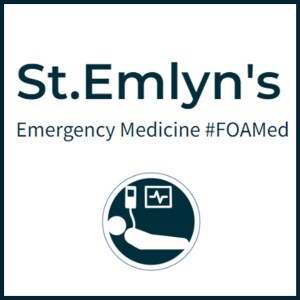
Upper gastrointestinal (GI) bleeding is a common and potentially life-threatening condition encountered in emergency medicine. It encompasses a broad spectrum of clinical presentations, ranging from mild cases with minimal blood loss to severe, life-threatening hemorrhages. Understanding the various causes, accurate risk stratification, and appropriate management strategies are crucial for optimizing patient outcomes.
Causes and Mimics of Upper GI BleedingUpper GI bleeding originates from the upper part of the gastrointestinal tract, including the esophagus, stomach, and the duodenum. Common causes include:
- Mallory-Weiss Tears: These are tears at the gastroesophageal junction caused by forceful vomiting or retching.
- Gastritis and Peptic Ulcer Disease: These conditions involve inflammation or ulceration in the stomach or duodenum and are frequent causes of bleeding.
- Esophageal Varices: Dilated veins in the esophagus, often due to liver disease and portal hypertension, can rupture and cause severe bleeding.
- Gastroesophageal Reflux Disease (GERD): Chronic acid reflux can lead to esophagitis and bleeding.
It is also important to distinguish true upper GI bleeding from conditions that mimic it. For example, blood from a nosebleed (epistaxis) may be swallowed and later vomited, simulating GI bleeding. Additionally, differentiating between hemoptysis (coughing up blood) and hematemesis (vomiting blood) is essential for accurate diagnosis.
Risk Stratification Using the Glasgow-Blatchford Score (GBS)Effective management of upper GI bleeding begins with risk stratification to determine the severity of the condition and the need for urgent intervention. The Glasgow-Blatchford Score (GBS) is a widely utilized tool that helps predict the need for medical treatment and the risk of adverse outcomes. It considers several clinical parameters, including:
- Blood Urea Nitrogen (BUN): Elevated levels suggest significant bleeding.
- Hemoglobin Levels: Low levels indicate blood loss.
- Systolic Blood Pressure: Hypotension is a sign of significant hemorrhage.
- Pulse Rate: Tachycardia can indicate a compensatory response to blood loss.
- Clinical Signs: The presence of melena, syncope, or liver disease increases the risk score.
Patients with a GBS of zero are considered low risk and may be suitable for outpatient management with appropriate follow-up. Those with higher scores require hospitalization for further evaluation and treatment, including possible endoscopy.
Initial Management and ResuscitationThe immediate management of patients with upper GI bleeding involves stabilizing the patient and preventing further complications. Key steps include:
- Airway Management: Ensuring a clear and secure airway is critical, particularly in patients with altered consciousness or ongoing vomiting.
- Fluid Resuscitation: Intravenous fluids are administered to maintain hemodynamic stability.
- Blood Product Transfusion: In cases of significant bleeding, transfusions of packed red blood cells, fresh frozen plasma, and platelets may be necessary to manage blood loss and correct coagulopathies.
Endoscopy is a crucial diagnostic and therapeutic tool in managing upper GI bleeding. It should ideally be performed within 24 hours of presentation to determine the source of bleeding and provide treatment. Urgent endoscopy is particularly indicated for patients with hemodynamic instability or signs of significant bleeding.
Special Considerations for Variceal BleedingVariceal bleeding, often seen in patients with chronic liver disease, requires specific management strategies due to its severity and associated complications. Key considerations include:
- Terlipressin: A vasoconstrictor that helps reduce portal pressure and control bleeding in variceal cases.
- Antibiotic Prophylaxis: Administered to prevent infections, which are common in patients with liver disease and variceal bleeding.
- Balloon Tamponade: In situations where endoscopy is not immediately available, a Sengstaken-Blakemore tube can be used as a temporary measure to control bleeding. This procedure should be performed with caution and preferably under the supervision of an experienced specialist.
The management of upper GI bleeding, particularly severe cases, requires a coordinated approach involving multiple specialties. The emergency physician plays a central role in initial stabilization and diagnosis, but collaboration with gastroenterologists, anesthetists, hematologists, and critical care teams is essential. This multidisciplinary team ensures comprehensive care, from initial resuscitation and endoscopic intervention to ongoing monitoring and treatment in critical care settings.
Disposition and Follow-UpThe decision to admit or discharge a patient with upper GI bleeding depends on the severity of the bleeding, patient stability, and the results of risk stratification. Low-risk patients (GBS of zero) may be discharged with a plan for outpatient follow-up and endoscopy. In contrast, patients with higher risk scores or ongoing symptoms should be admitted for further evaluation and treatment.
ConclusionUpper GI bleeding is a critical condition that demands prompt recognition, accurate assessment, and effective management. By utilizing risk stratification tools like the Glasgow-Blatchford Score and employing a multidisciplinary approach, healthcare providers can significantly improve patient outcomes. Proper diagnosis and timely intervention, including endoscopy and appropriate supportive care, are vital components of successful management.
As always, we encourage healthcare professionals to share their experiences and best practices in managing upper GI bleeds. Engage with us on social media or leave a comment on this blog post to contribute to the ongoing discussion on improving emergency medicine care.
More Episodes
 2018-12-31
2018-12-31
 3.5k
3.5k
 2018-12-23
2018-12-23
 3.4k
3.4k
 2018-11-28
2018-11-28
 3.8k
3.8k
 2018-11-13
2018-11-13
 3.6k
3.6k
 2018-10-28
2018-10-28
 3.1k
3.1k
 2018-10-22
2018-10-22
 3.4k
3.4k
 2018-10-16
2018-10-16
 3.3k
3.3k
 2018-09-28
2018-09-28
 3.6k
3.6k
 2018-08-17
2018-08-17
 3.4k
3.4k
 2018-06-15
2018-06-15
 3.8k
3.8k
 2018-05-31
2018-05-31
 5.0k
5.0k
 2018-05-26
2018-05-26
 3.2k
3.2k
 2018-05-17
2018-05-17
 3.3k
3.3k
Create your
podcast in
minutes
- Full-featured podcast site
- Unlimited storage and bandwidth
- Comprehensive podcast stats
- Distribute to Apple Podcasts, Spotify, and more
- Make money with your podcast
It is Free
- Privacy Policy
- Cookie Policy
- Terms of Use
- Consent Preferences
- Copyright © 2015-2024 Podbean.com




